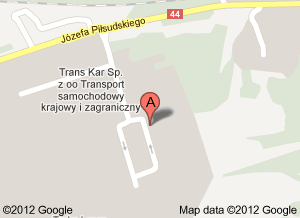POIG.01.01.02-00-015 / 09 Advanced materials and technologies for their production, Priority 1 Research and development of modern technologies, Measure 1.1 Support for scientific research for the knowledge-based economy, Sub-measure 1.1.2 Strategic programs for scientific research and development works, Area III New materials from light alloys, Task III.2 New aluminum alloys with the addition of vanadium with able to absorbing energyfor the automotive industry.
| Project group: | Projekty Programu Operacyjnego „Innowacyjna Gospodarka 2007-2013” |
| The term: | stycznia 2010 - stycznia 2013 |
| Project Manager: | PhD Marzena Lech-Grega |
| Employees: |
Owing to their properties, aluminium alloys are widely used in the transport industry. The possibility to control these properties, among others, also by changes in the chemical composition, processing route, or heat treatment allows using these materials for the increasing number of vehicle components.
The goal most important in the construction of a vehicle is its safety, and in particular the behaviour during accidents. Accidents are simulated in the, so called, "crash tests". Detailed analysis of the behaviour of materials undertaken in such studies allows selecting the best design of an element, as well as a modification of its properties through changes in the chemical composition and heat treatment. The choice of material for parts operating in the crumple zones during accidents should allow not only for the mechanical properties of the alloy, but also for its ability to absorb energy.
Evidence exists that wrought aluminium alloys containing vanadium in a range of 0.05 - 0.5% possess not only high mechanical properties and high ductility, but also the ability to absorb the kinetic energy.
The monograph presents the results of the properties (mechanical properties and structure) of the profiles 6xxx series aluminum alloys containing copper, and vanadium in an amount of 0.1 to 0.2 wt.% after heat treatment and aging, which are compared to a material without the addition of copper. The reference material was 6xxx alloy without copper and vanadium. It was found that the increase of vanadium content to 0.2 wt.% in the alloy 6xxx series causes only a slight decrease in strength , but increases the elongation by more than 5%. The addition of copper significantly increases the strength properties.
Addition vanadium to AlMgFeSiCu increases the alloy's ability to absorb energy in an attempt to axial compression (crush test) of the extruded profiles. Profile AlMgFeSiCu alloy containing 0.2% vanadium can absorb more than 30% energy during axial compression than profiles without the addition of vanadium.
back






